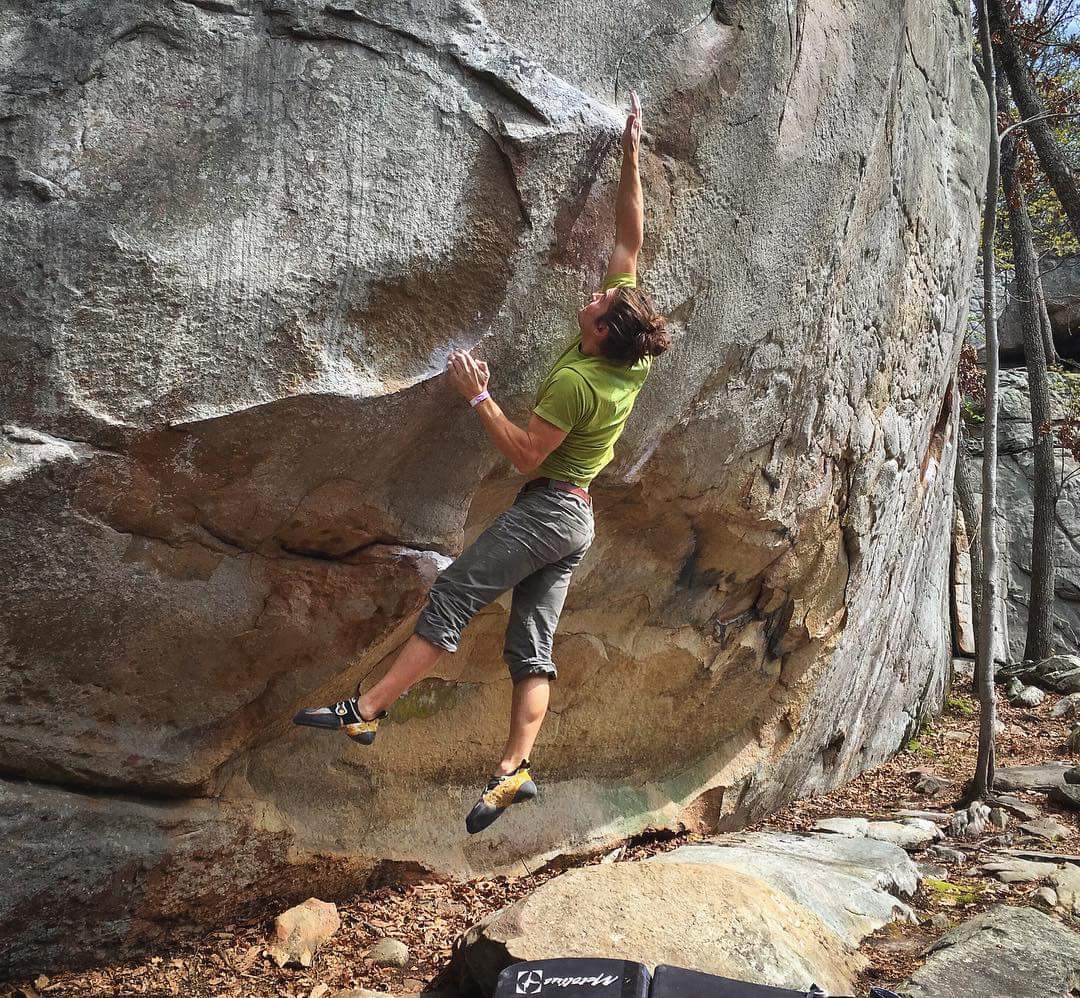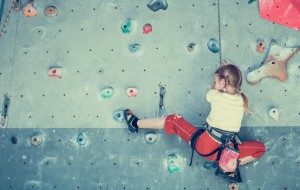Your daughter is struggling with her self-confidence; your son is trying to get into shape (or worried about his weight); your teen is stressing out over school, work, or some other mystery of the teenage mind. What to do? Get them on the wall. Yes, rock climbing for kids is a potent solution for just about everything that ails our kids.

It’s no surprise that most motivational posters include an image of someone climbing or summiting a peak. Climbing is an especially demanding sport that challenges – and rewards adults and kids alike – on so many levels. Here are just a few.
Strength
Anyone who has climbed a tree or wall knows just how physically demanding it can be. Less well known, however, is that it’s not just the arms that get a workout. Climbing will test (and grow) your child’s abdominals, obliques, deltoids, trapezoids, biceps, lats, quads, calves, and forearms. Numerous studies have shown that climbers are among the strongest, best-conditioned, most agile, and leanest of athletes.
Conditioning
It’s easy to mistake climbing as a sport for muscle but not conditioning. In reality, however, a child climbing a wall will burn the same number of calories as a reasonably fast jogger (up to 8-minute miles). Moreover, Harvard Medical School will tell you that a climber is using just as much energy as a swimmer doing the crawl or butterfly stroke, and will burn more than 800 calories during a one-hour climb.
Stress Reduction
By combining complex problem-solving skills with intense focus, climbing increases the body’s levels of norepinephrine, a neurotransmitter that reduces stress. And just like their adult counterparts, children will experience euphoria when they finally master a climbing challenge (along with a healthy dose of self-confidence to go with it).
Self-Confidence
Speaking of which, this is a big one (ergo all those motivational posters), because a climber literally is on his or her own up there. Marco Laiti, a USAC-certified coach at Charlotte-based Inner Peaks (pictured below), points out that when it comes to climbing, “you are by yourself on the wall, no one else is there to help you, and you are responsible for your successes and failures.”

As a result, child climbers are taught to face their fears and discover for themselves the immense value of overcoming challenges on their own. [Read this piece for an example of how climbing even helps adults overcome their fears of failure.]
Problem-Solving/Academics
For many kids, climbing is akin to a vertical chessboard, requiring the development of complex problem-solving skills if they’re to overcome obstacles and reach the top. In recent years, a number of schools across the country have replaced traditional gym class activities with climbing, dancing, and bicycling and seen dramatic increases in academic achievement and corresponding decreases in suspensions. A study by the University of North Florida found that “climbing a tree or balancing on a beam can dramatically improve the cognitive skills” of children.
Gender-Neutral
Climbing is unique in that both sexes are more or less able to participate and compete equally. “At the highest level there isn’t a huge difference from what men and women can achieve,” says Laiti. “Men are still pushing the sport further, but the gap definitely is closing.” So if you’re tired of driving in separate directions for your son and daughter, consider climbing for both.
Competitive
Lots of kids love to compete and climbing has them covered. USA Climbing hosts regional, divisional, and national championship competitions that test kids on a variety of levels. Laiti says fall climbing is for bouldering competitions, where kids will climb without ropes up to 17 feet and focus on “tricky and extremely difficult movement.” Come spring, and the kids are competing with ropes (up to 70 feet) and speed climbing.
All Ages
Kids can start climbing as young as 2 and no equipment is needed. Kids are considered for teams by age 7 and for competition by age 9. “In rope season kids are asked to belay and are responsible for another climber’s safety,” says Laiti, “so if they do not have the focus or maturity for us as coaches to trust them with that then we do not let them move on.”
Fun
It’s well known that by age 13 more than 70% of kids abandon sports. Climbing, on the other hand, is experiencing a boom, and today ranks as one of the fastest growing sports for both adults and children alike (helped in part by the boom in rock walls at gyms and health clubs).
Outdoors
As kids master the intricacies of climbing a wall, they’ll naturally evolve to outdoor climbing, which introduces them not just to the art of ascending a ‘real’ rock wall or mountain, but also the joys and benefits of camping, hiking, and simply spending time outside (and away from those pesky digital devices).
The bottom line: climbing is an outstanding sport for young people eager to get in shape, grow self-confidence, relieve some stress, and have fun. For parents, it’s a great way to help their kids, regardless of age or gender. We call this a win-win.
Find a rock climbing club near you here.
